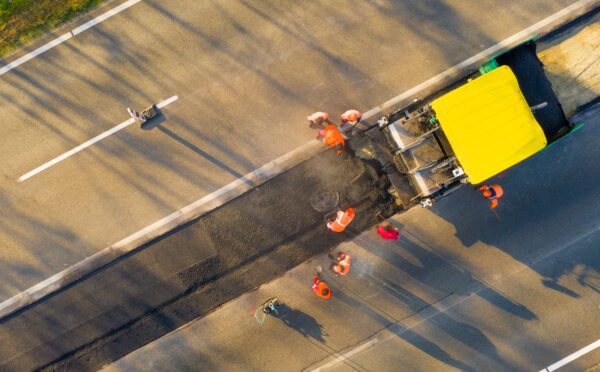Authors
Partner, Commercial, Toronto
Associate, Construction, Toronto
Associate, Commercial, Toronto

The Canadian Construction Documents Committee has published a new version of the CCDC 2 – Stipulated Price Contract (“CCDC 2 (2020)”). In this article, we highlight some of the key changes being introduced by the CCDC 2 (2020) and use terms from this new version.
1. Ready-for-Takeover
CCDC 2 (2020) introduces a concept of Ready-for-Takeover (“RFT”) which takes place after Substantial Performance of the Work and before the Work is complete. The deadline to achieve RFT is now set out in Article A1-1.3 instead of the Substantial Performance of the Work. The Contractor is no longer required to attain Substantial Performance by a set milestone date. The eight prerequisites to attaining RFT are set out in GC 12.1.1, though four of them may be deferred. The date of RFT is now a critical milestone, as it affects timelines relating to the insurance (GC 11.1), warranty (GC 12.3), indemnification (GC 13.1) and waiver of claims (GC 13.2), timelines which were previously tied to Substantial Performance of the Work.
2. Early occupancy
An Owner may take occupancy of a part or the entire Work prior to the RFT, if the Contractor agrees and the relevant authorities approve. However, the part of the Work that is occupied by the Owner will be deemed to have been taken over by the Owner from the date it is occupied and from such date onwards the warranty period for that part of the Work will commence and the Contractor will cease to be liable for the care of such part. Earlier versions of the CCDC 2 did not address early occupancy of all or a part of the Work by the Owner.
3. Payment Legislation and adjudication
Prompt payment and mandatory adjudication legislation is being enacted across Canada in an effort to alleviate perceived payment delays down the construction pyramid. In 2019, such legislation came into force in Ontario through amendments to the Construction Act. The CCDC 2 (2020) introduces the definition for “Payment Legislation”, which means the applicable legislation of the province which governs payment under construction contracts.
CCDC 2 (2020) provisions related to progress payments, applications for payment, certificates for payment and payment of holdback refer to the Payment Legislation (e.g., Article A-5, GC 5.2.6, GC 5.3.1, GC 5.4.3, GC 5.5).
The payment provisions in GC 5.3 – PAYMENT of the CCDC 2 (2020) align with the Construction Act. For instance, the Owner is required to make payment to the Contractor within 28 calendar days after receipt of the application for payment. Further, the Consultant must certify payment within ten calendar days after receipt of the application for payment, and if the Consultant certifies a different amount, or rejects the application or any part thereof, the Owner will have sufficient time to issue a notice of non-payment within fourteen calendar days of the receipt of the application for payment.
The CCDC 2 (2020) also addresses adjudication by providing that any dispute between the parties may be resolved by adjudication as may be prescribed by the applicable legislation.
4. Construction safety
The Contractor is no longer solely responsible for health and safety at the Place of the Work. Instead both parties are responsible for compliance with the health and safety legislation, which is an important change in the CCDC 2 (2020).
5. Insurance
CCDC 2 (2020) revises the period for insurance coverage provided in GC 11.1.1 by linking it to the date of RFT instead of the Substantial Performance of the Work. The insurance requirements set out in CCDC 41 are also being updated in 2020. CCDC 41 (2020) increases the required insurance coverages for general liability insurance, automobile liability insurance and manned aircraft and watercraft liability insurance from five million dollars to ten million dollars. CCDC 41(2020) also creates a distinction between a manned aircraft and an unmanned aerial vehicle, which includes drones and requires an unmanned aerial vehicle liability insurance of five million. Lastly, CCDC 41(2020) introduces a new category for Contractor’s pollution liability insurance with a minimum coverage of five million per occurrence for bodily injury, death and damage to property.
6. Contract security
CCDC 2 (2020) removed the requirement for the Contractor to provide the contract security specified in the Contract Documents (previously, GC 11.2).
7. Reimbursable cost for Change Directive
CCDC 2 (2020) limits the costs to be considered in the valuation of a Change Directive to those that contribute directly to the implementation of the Change Directive. Furthermore, the list of reimbursable costs for performing the Work attributable to the Change Directive provided in GC 6.3.7 has been substantially amended by CCDC 2 (2020), and the costs have been divided into the following categories:
- Labour;
- Products,
- Construction Equipment and Temporary Work;
- Subcontract; and
- Others.
8. Indemnification and waiver of claim
Claims that are dealt with by the indemnification provision (GC 13.1.1.2) must be made within six years of RFT, instead of Substantial Performance of the Work, or within a shorter period as may be prescribed by any applicable limitation statute. GC 13.1 also now provides that, in certain instances, neither party will be held liable to the other for indirect, consequential, punitive or exemplary damages.
For claims arising from substantial defects and deficiencies in the Work (GC 13.2.4), the Owner waives and releases the Contractor from all claims except claims for which notice has been received by the Contractor within six years of RFT, instead of Substantial Performance of the Work, provided such waiver is permitted by applicable limitation statute. If the applicable limitation statute does not permit such waiver, such claim must be brought within any shorter period of time prescribed by the applicable limitation statute.
9. Cash allowances
CCDC 2 (2020) now allows the Consultant to reallocate any unexpended amounts from cash allowances to cover the shortfall in other cash allowances (i.e., situations where the actual cost of the Work under a cash allowance exceeds the amount of such cash allowance (GC 4.1.4)). In such cases, there will be no changes to the Contract Price for overhead and profit.
Division 01
Along with the CCDC 2 (2020), the CCDC has also introduced Division 01 which can be used with any form of contract, including a non-CCDC form, with appropriate editing. Some of the provisions from the CCDC 2 (2008) have now been migrated to Division 01, such as the provisions relating to Documents at the Site and definition of “provide”. Going forward, stakeholders interested in using CCDC 2 (2020) should review Division 01 prior to drafting their Supplementary Conditions as Division 01 addresses concepts which would typically have been addressed in Supplementary Conditions.
Conclusion
We are closely monitoring the progress and use of the CCDC documents, and recommend that you stay tuned for further updates. Industry observers expect some of these changes to appear in the newer versions of other CCDC suite documents. It is common practice for stakeholders to enter into “Supplementary Conditions” to modify the provisions of the standard form CCDC documents to address the circumstances of their Project or provide greater clarity. The modifications could include, for example: (a) identify the entity fulfilling the role of the “constructor”; (b) allow parties to either terminate, suspend or proceed with other dispute resolution methods, if a dispute on the same subject matter is referred to adjudication; or (c) specify the type(s) of contract security. Osler’s breadth and depth of experience and expertise with the CCDC documents and Supplementary Conditions, together with our hands-on approach in understanding the Construction Act of Ontario and Payment Legislations across Canada, will be of great value for those seeking to understand the risk allocation in the new CCDC 2 (2020) or any other CCDC document.

